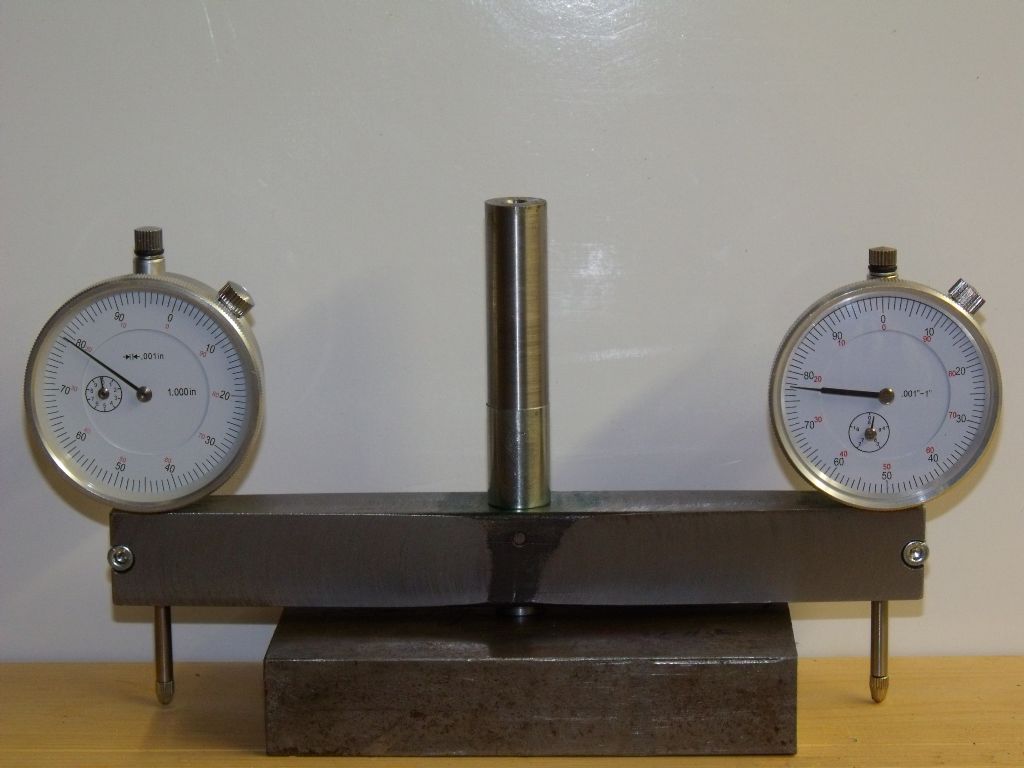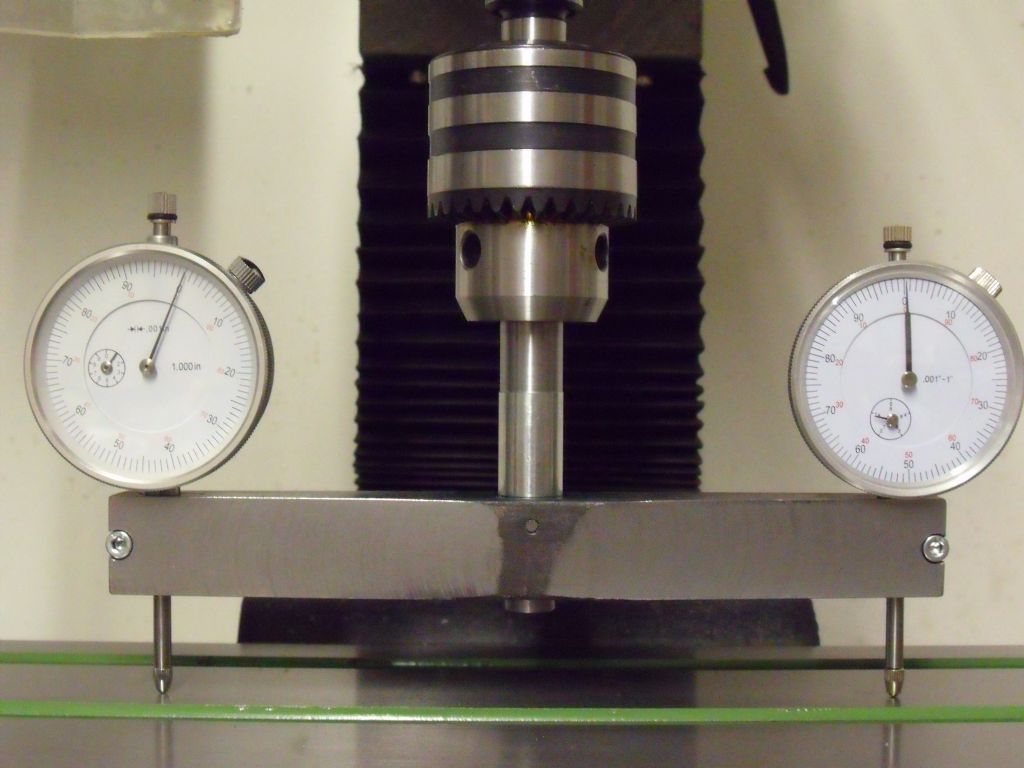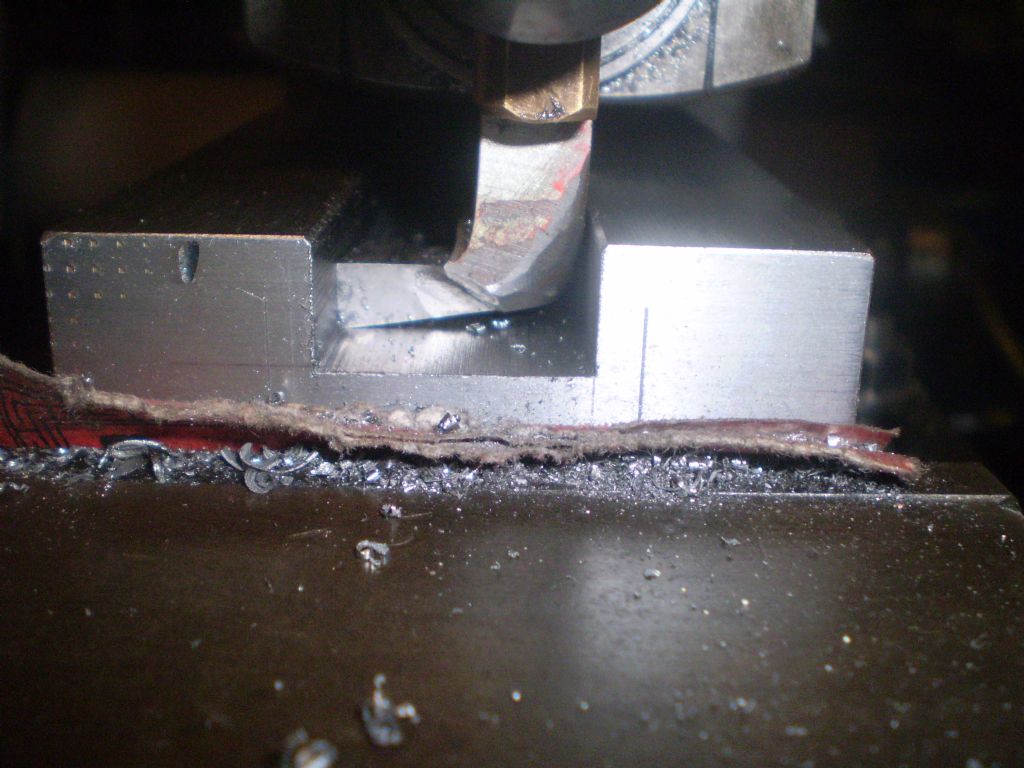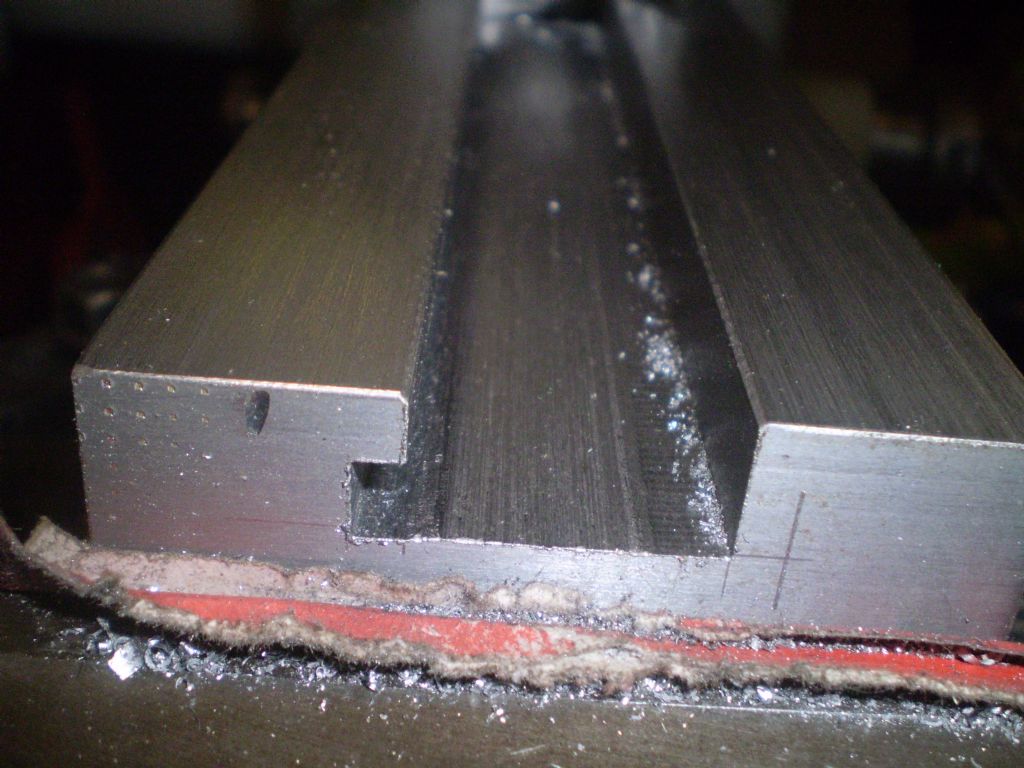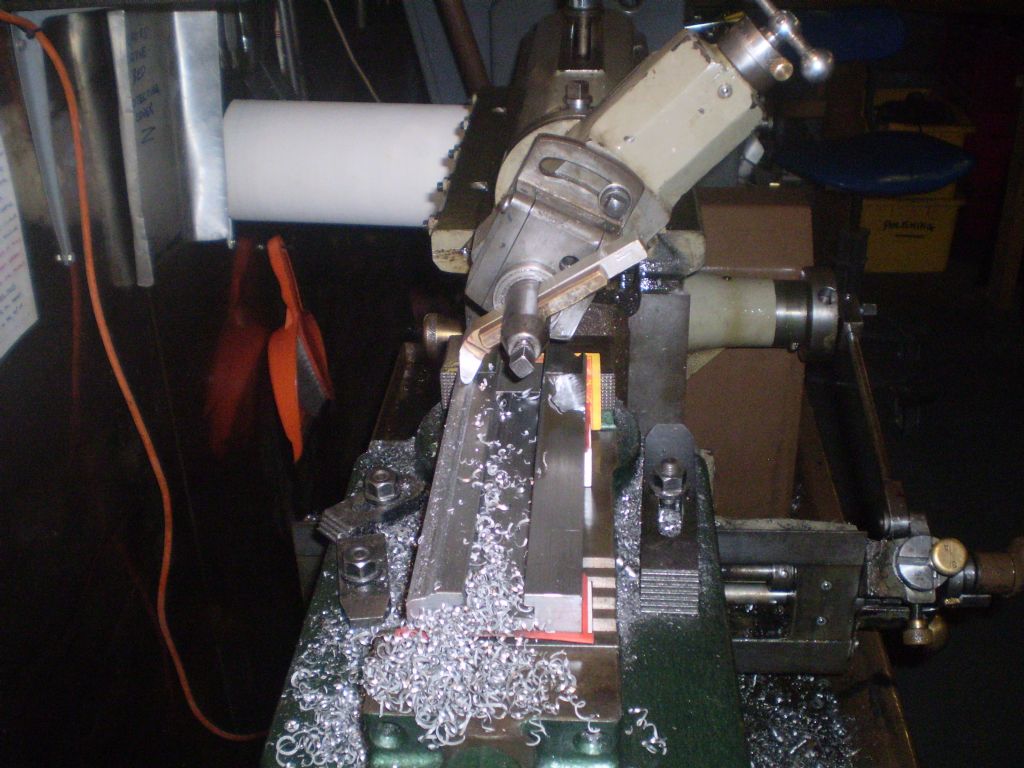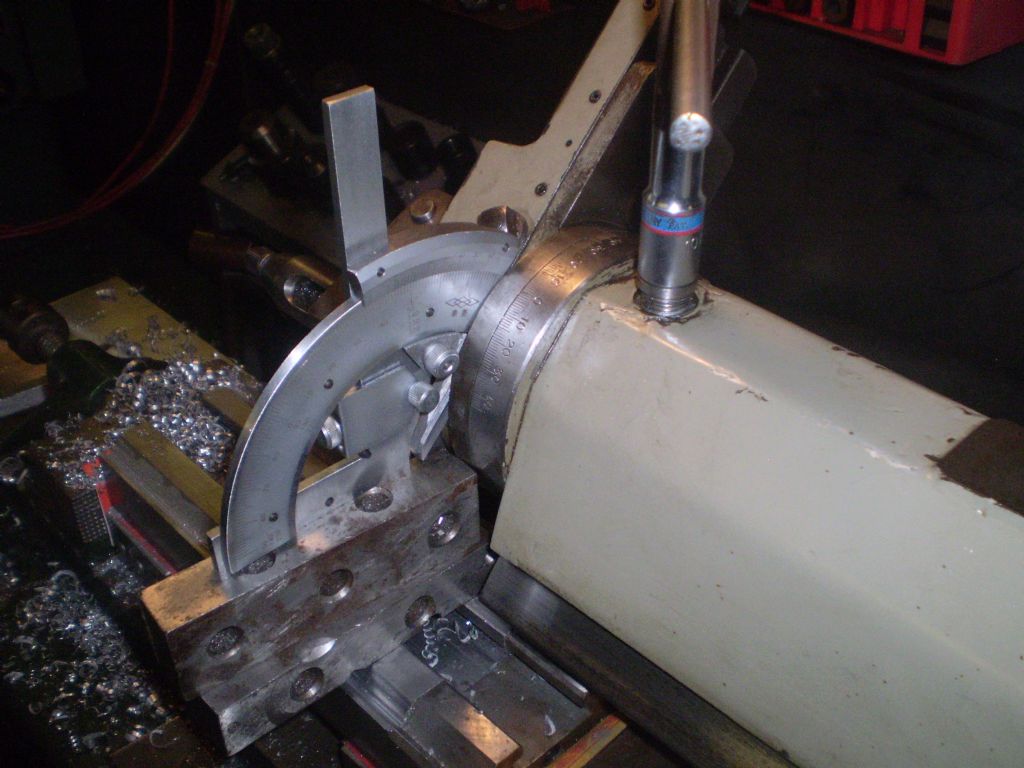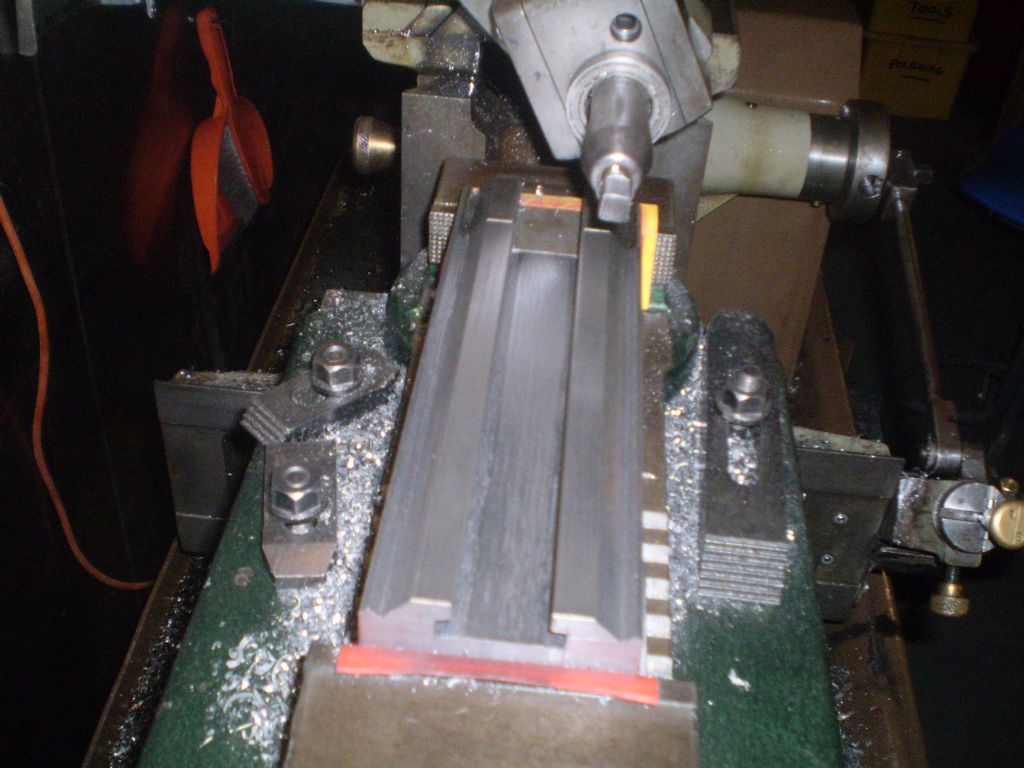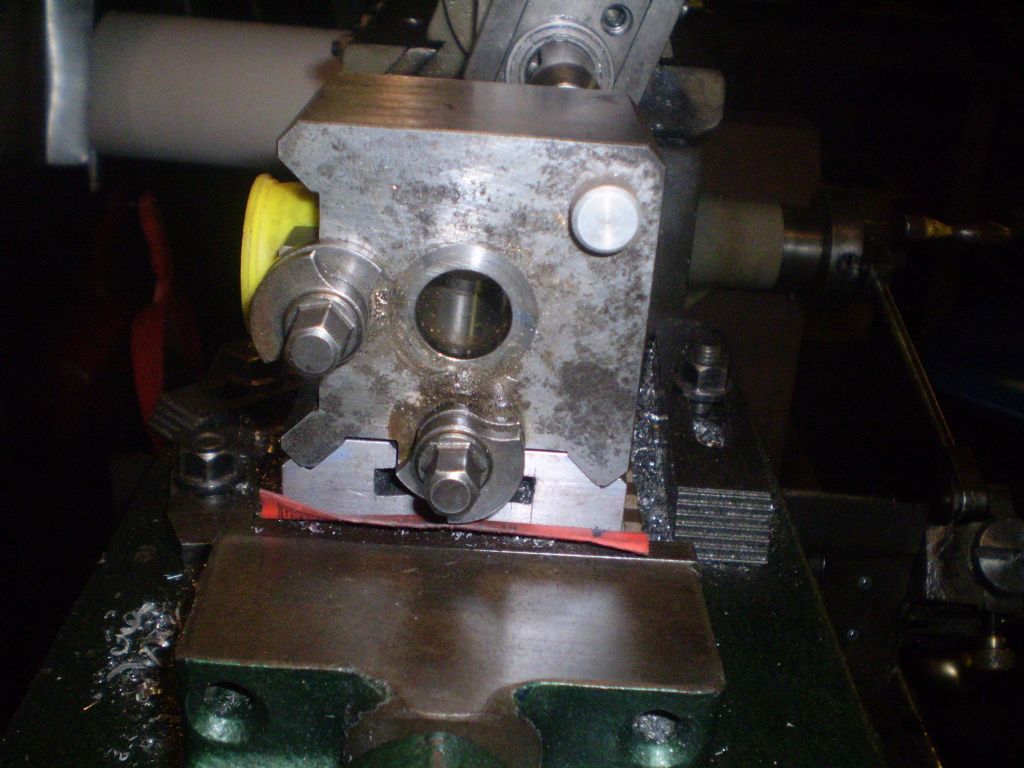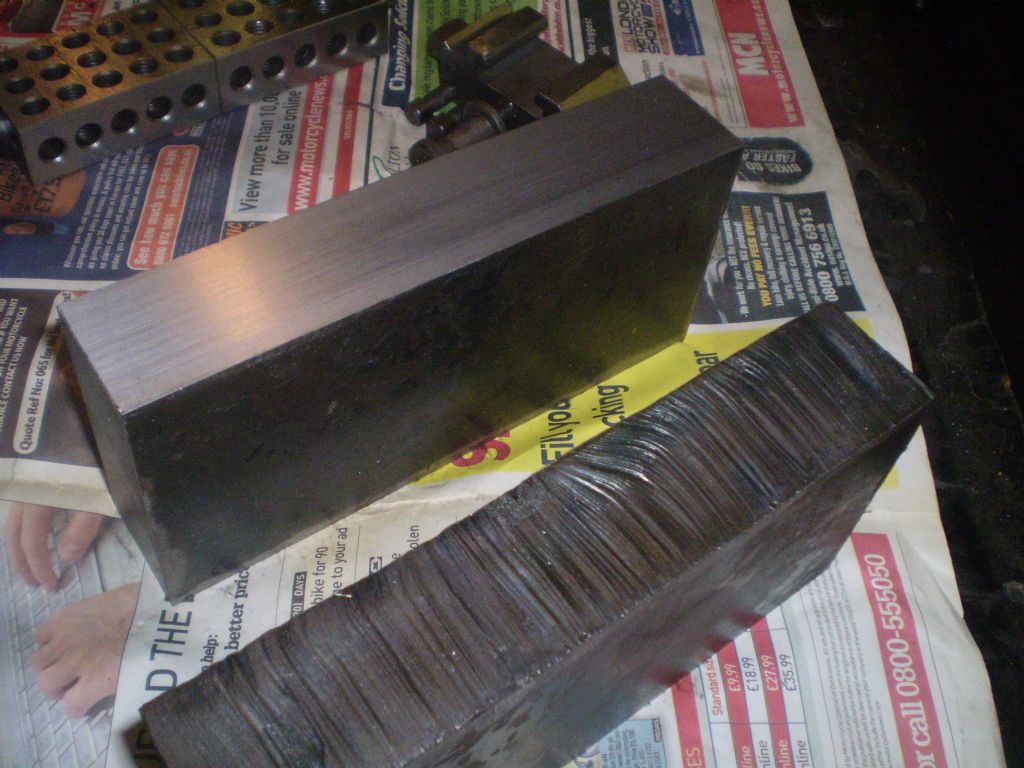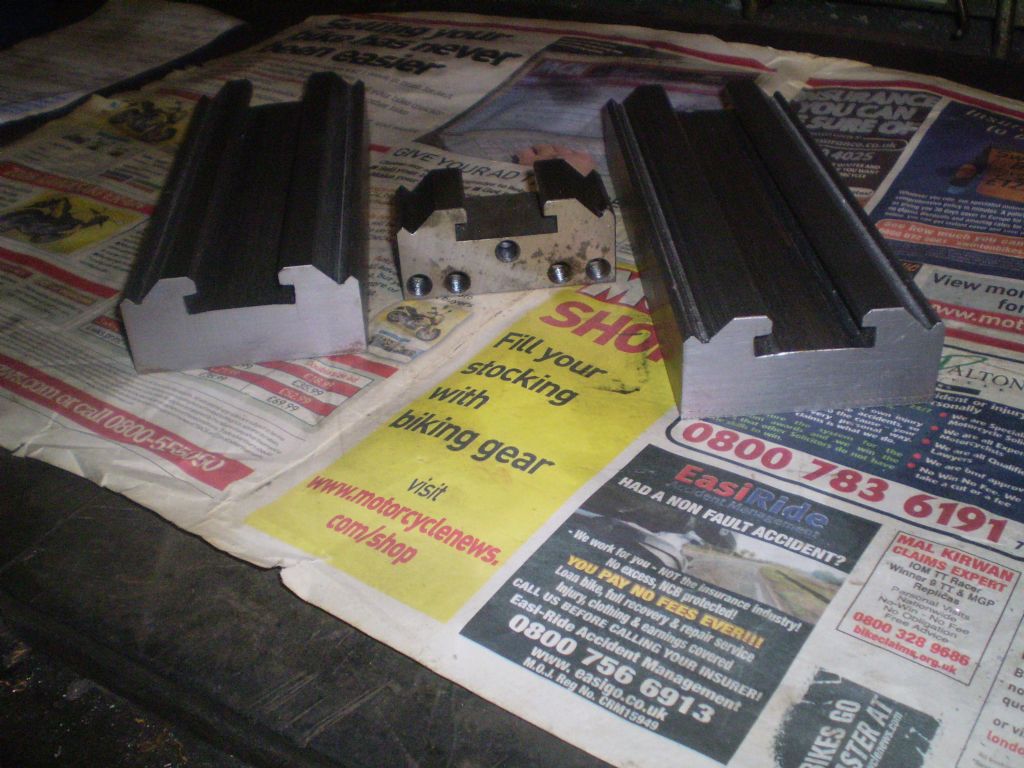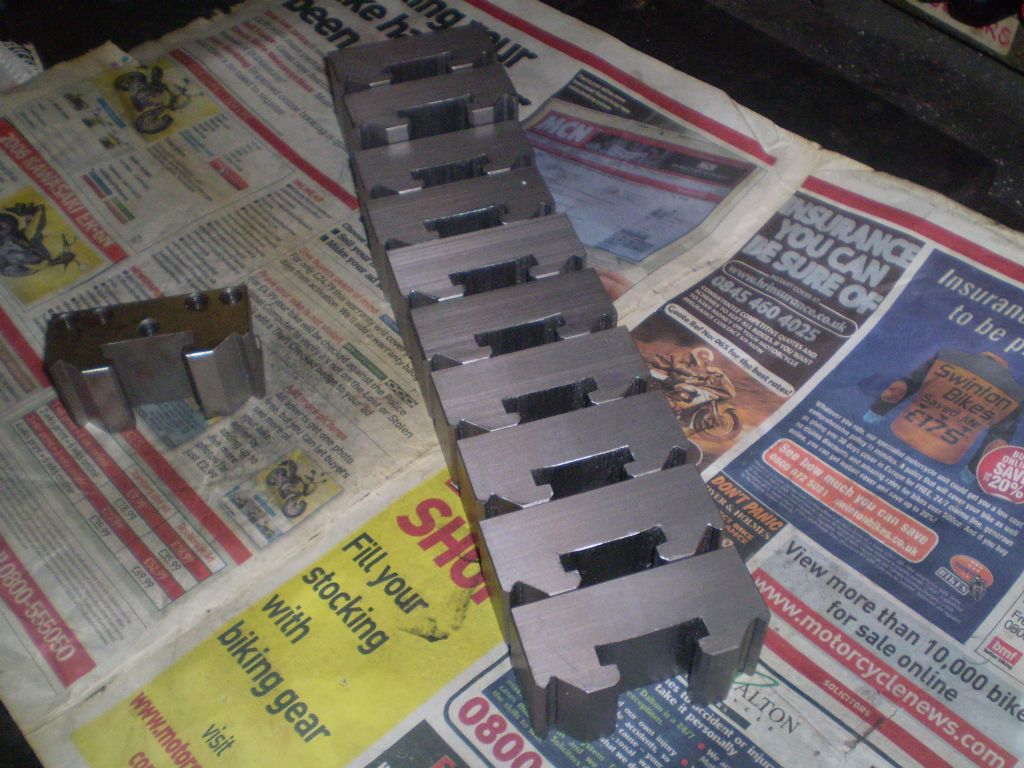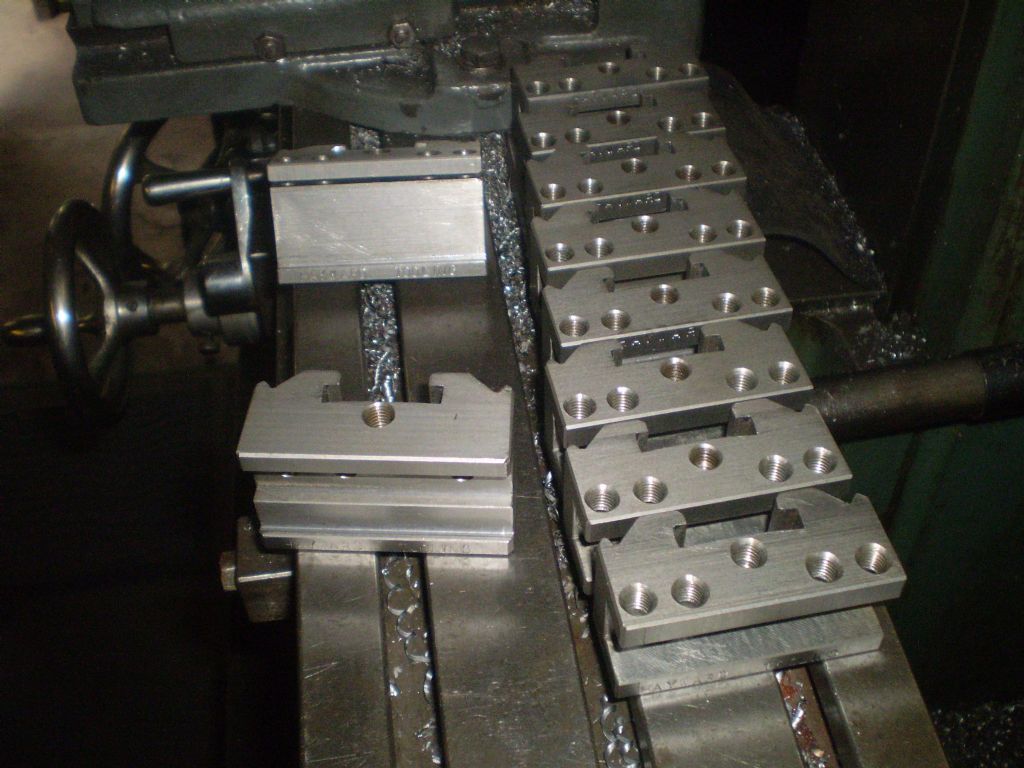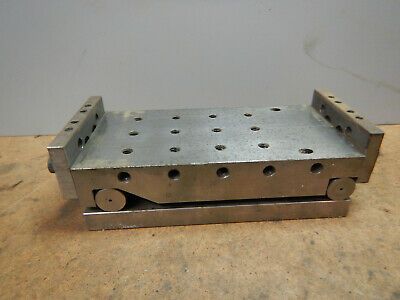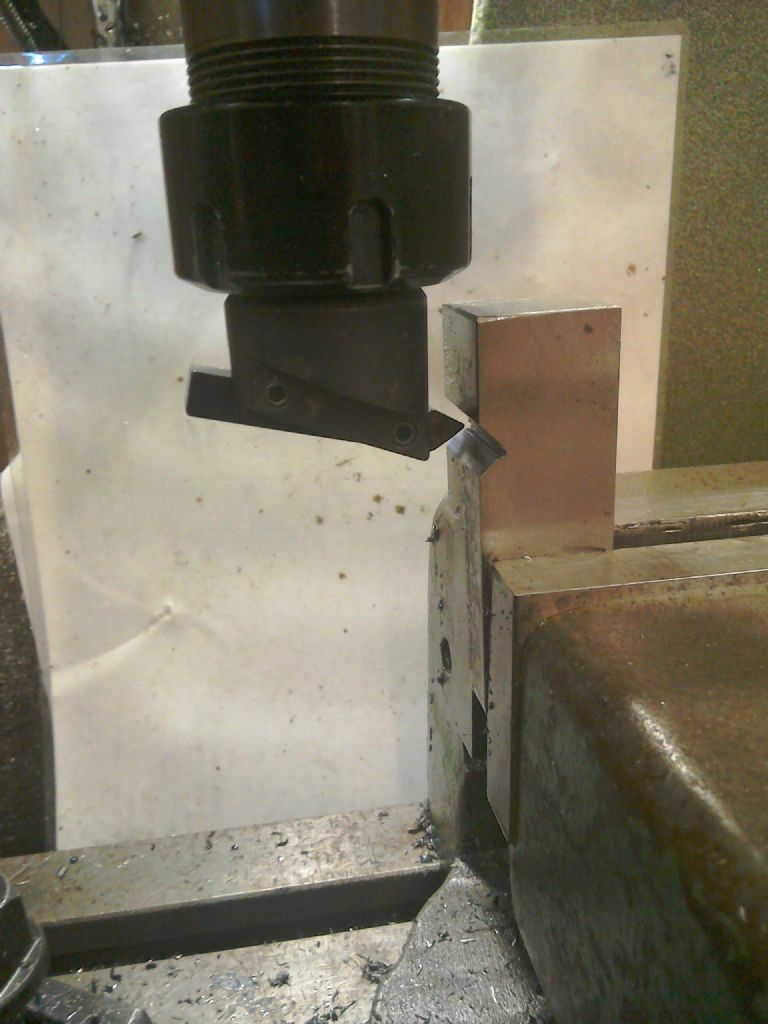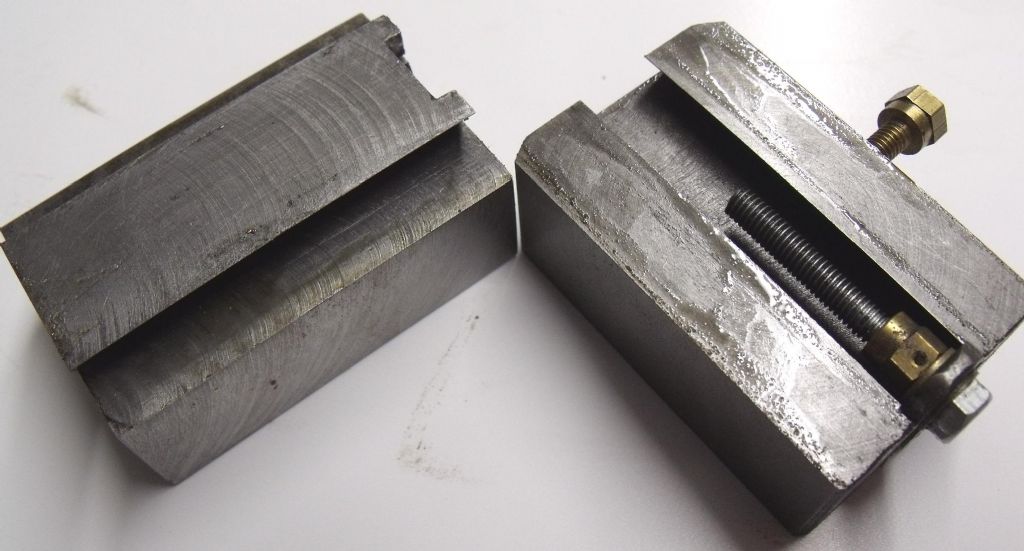Lee
It may not be obvious but the Dickson toolpost & toolholder design is technically over-constrained with more locating surfaces than are strictly needed. There are engineering reasons but of a sort which folk line us don't need to worry about.
I would forget about accuracy on the outside Vee face and simply set things up so as to get the best possible finish on the wide, inner, Vee face cutting a little deeper so the outer Vee face is in the wind. Interestingly the wear, polish actually, marks on my factory Dickson / Rapid posts are on the outer Vee not the inner suggesting that maybe thats where location occurs. I really ought to blue things to find out what touches where, but life is short! However the inner Vee face is probably easier to cut and clearly equally functional. The narrower outer ones could be done with a smaller, cheaper, cutter tho'. Whatever works.
With several to do I'd not mess around with a vice or trying to tram the head at 45°. Use what you have and make a simple sturdy sine plate jig with a solid fence and clamps to hold the work in the right place. Forget angles, too fussy and we home shop types don't need to spend on the super accurate measuring equipment to get it really right.
Do it the old fashioned way by slope. An accuracy of one thou at one foot, or the metric equivalent, is well within ordinary capabilities and corresponds to about 1/20 th of a degree, 3 minutes of arc. No way will you tram a head to that sort of accuracy. If you have a decent DRO set up making an accurate sine plate is a piece of cake as is making a one time use block to get the angle.
We home shop types tend to fight a little shy of one time jig "disposable" tooling and tend to spend money on versatile equipment that can do lots of things which, mostly, never actually happen.
DRO sets really are a game changer here.
I'd expect to make up a sine plate style jig in less time than it takes to set up the head tram and vice. Takes a little longer but more useful to make the plate face a grid of tapped holes style, 1/4" or 6 mm in 5 spot dice in 1" or 25" square base pattern will hold anything we want to make. Stamp the riser block with the thickness / angle and pop it in box should you ever need it again. Probably will at 45°. Different angle. Make an new block just like that. I have nice gauge block sets and a fancy 3 way sine plate style stack but for all reasonable use a DRO will cut one to whatever size you need to set the sine plate when you need it.
Obviously set the fence so you can just flip the job to do the opposite Vee in the right place with the vertical head travel on the same DRO number or, better, hard stop.
The T shape slot in the back is hard to cut and harder to get in the right place. I'd cheat. Cut a plain slot then screw and glue the flanges on. Check that the slot depth is right before gluing. Having done number one lock the head setting for the finish cut on all the others. Theoretically its not as strong as factory carved from solid but I seriously doubt if anyone could prove weakness in practical use.
When you finish machine the tool slot it may well be easiest to dismount the tool post, lay it on its side on the mill table and use it as a jig to mount the holder for final machining. That way you know the slot floor is correctly aligned. I'd clamp the base of the new holder against a fence on the table which would work fine if you machine that face on the block first and use as the reference for all subsequent one.
Hafta say that if you are using carbide inserts there is much to be said for making some fixed holders with no adjustments for use with the insert holders only. With a good set-up and efficient machining habits 8 holders is as easy to make as 4.
Clive
Lee Jones 6.


